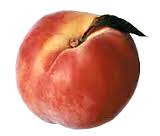There’s one more feature that these things possess:
an extra fancy autopilot mode.
The tubes can run themselves quite well unless
presented with an overriding code.
Not only can they fully self-propel;
they'll also benefit from their mistakes.
They’ll learn from other such machines as well,
so they can live in unimagined lakes.
They will be needing heavy-duty brains
or silicon equivalents thereof,
more like our own than artificial strains
that work below on what was done above.
The tubes’ designers, in this AI plight,
have found a way, but only their best guess.
Some variations in their makeup might
work better with environmental stress.
The robots that live long will reproduce.
The others—well, it’s just like in the wild.
More goslings for the strong and healthy goose;
the smarter parent has the smarter child.
© 2010 Louis A. Merrimac
Work below: I asked Cassie Tabori, a friend who understands artificial intelligence (AI) what this means. She says human brains, like other animal brains, use what they call parallel processing, in which the strength of various influences affect the organism’s behavior. She says this is much more amenable to learning than is the linear processing that computers use. She went on about some robot dog called Aibo, but she lost me. I think I know as much as I need to know about AI in order to follow the plot of this story, and I’m not about to attempt to understand it any better.
Wednesday, March 31, 2010
In the Next Life, Canto I, stanzas 41-45
I have nothing to add today, but I have to justify the indent:
Subscribe to:
Post Comments (Atom)

Lou, it's your blog. You don't have to justify anything. Oh, Okay, never mind, I just got the joke. Ha ha, I think.
ReplyDelete